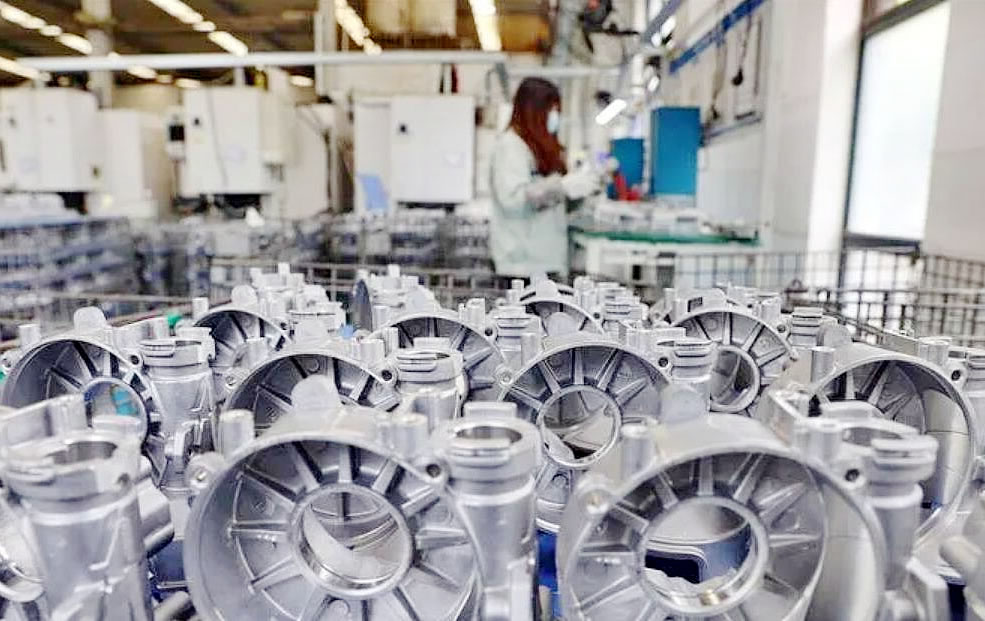Aluminum Casting Factory How To Cast Aluminum?
Aluminum casting is a versatile process used by professionals in many industries to create high-quality, durable aluminum castings. From aerospace components to automotive parts and beyond, the Aluminum Casting Factory Processes are key for creating precise shapes with excellent surface finishes. But what does it take to craft an aluminum casting? This article will provide a comprehensive guide on the steps involved in crafting an aluminum casting from start to finish. We’ll cover topics such as designing gating systems, determining riser size and shape, adjusting casting temperatures, and strategies for increasing density of your castings. With this information under your belt you’ll be able to confidently get started on any aluminum project!
1. Overview of Aluminum Casting Factory Processes
Aluminum casting is the process of forming aluminum into various shapes and sizes by pouring molten metal into a mold. Aluminum Casting Factory Processes involve melting, blending, and refining aluminum alloys before they are poured into an appropriate mold. This forms an exact replica of the desired shape; once cooled, it can be removed from the mold for further processing. The aluminum casting process is a precise craft that requires an experienced operator to get the job done right.
2. Types of Aluminum Castings and Their Benefits
The Aluminum Casting Factory Processes can be used to create a wide variety of aluminum castings, each with its own unique benefits. Cast aluminum parts are often lighter and stronger than other materials, making them ideal for projects that require precision and durability. Additionally, some types of aluminum alloys are corrosion-resistant or able to withstand extremely high temperatures, which makes them well suited for applications in the aerospace industry.
3. Designing the Gating System for Aluminum Castings
The gating system is an important part of the Aluminum Casting Factory Processes. This refers to the channel through which molten metal and other substances enter the mold. The design of this system will vary depending on the size and shape of the casting, as well as its pressure requirements. A successful gating system should be able to evenly distribute the alloy throughout the entire mold cavity without creating any air pockets or turbulence that could cause defects in your castings.
4. Determining the Riser Size and Shape for Aluminum Castings
The riser is an additional part of the Aluminum Casting Factory Processes that helps create a uniform casting. This is because it serves as a reservoir for aluminum and other alloying materials, which can be used to top up the mold cavity if needed. The size and shape of the riser should be determined based on the size and weight of the casting, as well as its pressure requirements.
5. Adjusting the Casting Temperature for Aluminum Castings
The Casting temperature is an important factor to consider when crafting aluminum castings. This is because it influences the solidification rate of your alloy and can cause defects if not adjusted properly. The optimum casting temperature will depend on your specific alloy, but it typically ranges from 500-700°C (930-1290°F).
6. Strategies to Increase the Density of Aluminum Castings
The density of an aluminum casting is a measure of how much material it contains in a given volume. Increasing the density of your castings can make them stronger, lighter, and more durable. There are several strategies you can use to increase the density of your aluminum castings, such as using higher-grade alloys, altering the gating system, and adjusting the pouring temperature.
By understanding the Aluminum Casting Factory Processes, you’ll be able to produce high-quality aluminum castings with confidence. With the right knowledge and techniques, you can craft perfect pieces every time!
7. Tips on How to Achieve Quality Results with Your Aluminum Casting Projects
Quality is key when it comes to aluminum casting projects. Here are a few tips that can help you achieve excellent results:
– Always inspect your molds for defects or cracks before pouring
– Use high-grade alloys and avoid impurities
– Calculate and adjust the riser size according to the alloy’s weight
– Ensure your gating system is properly designed
– Use a high pour temperature for the best results
By following these tips, you can rest assured that your aluminum castings will meet the highest standards. With experience and practice, you’ll be able to produce perfect pieces with ease!
Creating high-quality aluminum castings requires knowledge and skill. The Aluminum Casting Factory Processes can help you achieve the best results by guiding your design decisions at each step, from choosing the right alloy to designing a gating system that ensures uniformity. By following key tips like inspecting molds for defects or using higher grade alloys with minimal impurities, you can ensure that your aluminum casting projects will meet even the highest standards of quality. With experience and practice, crafting perfect pieces with ease is within reach!

